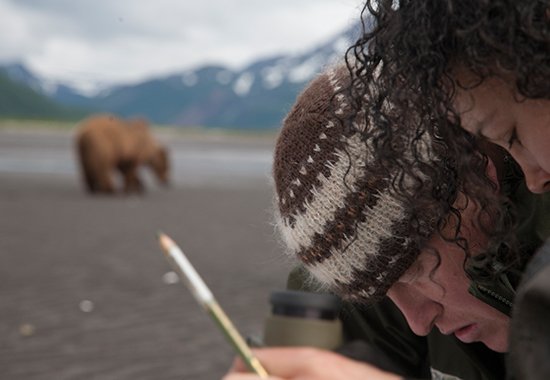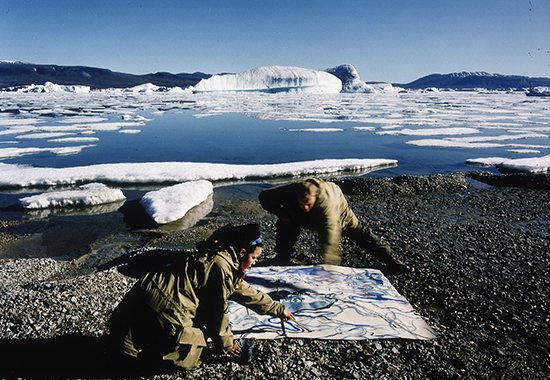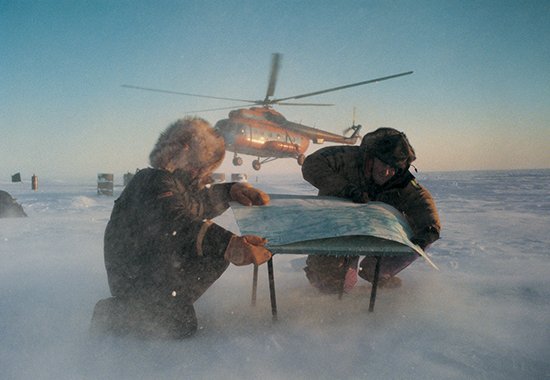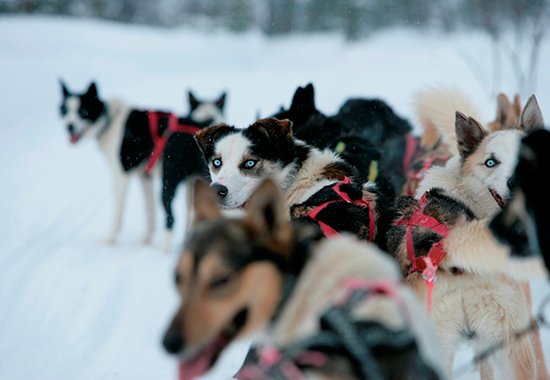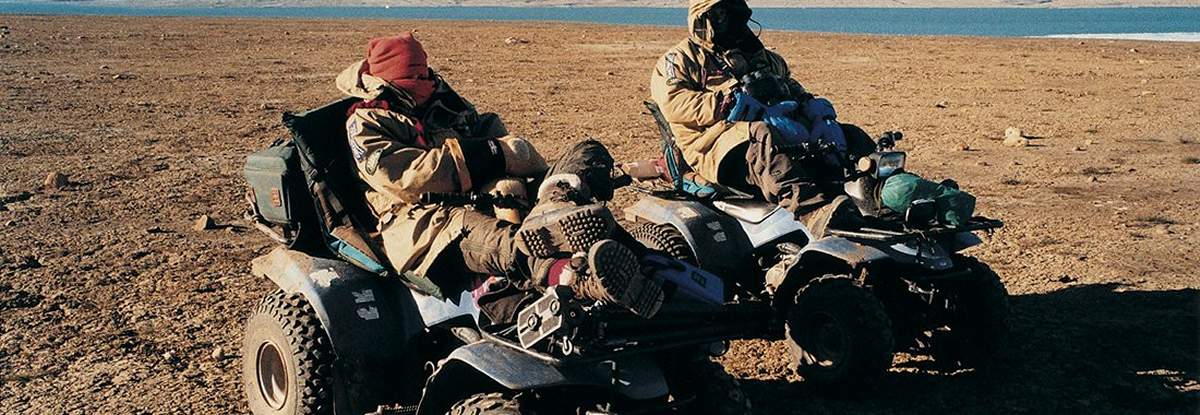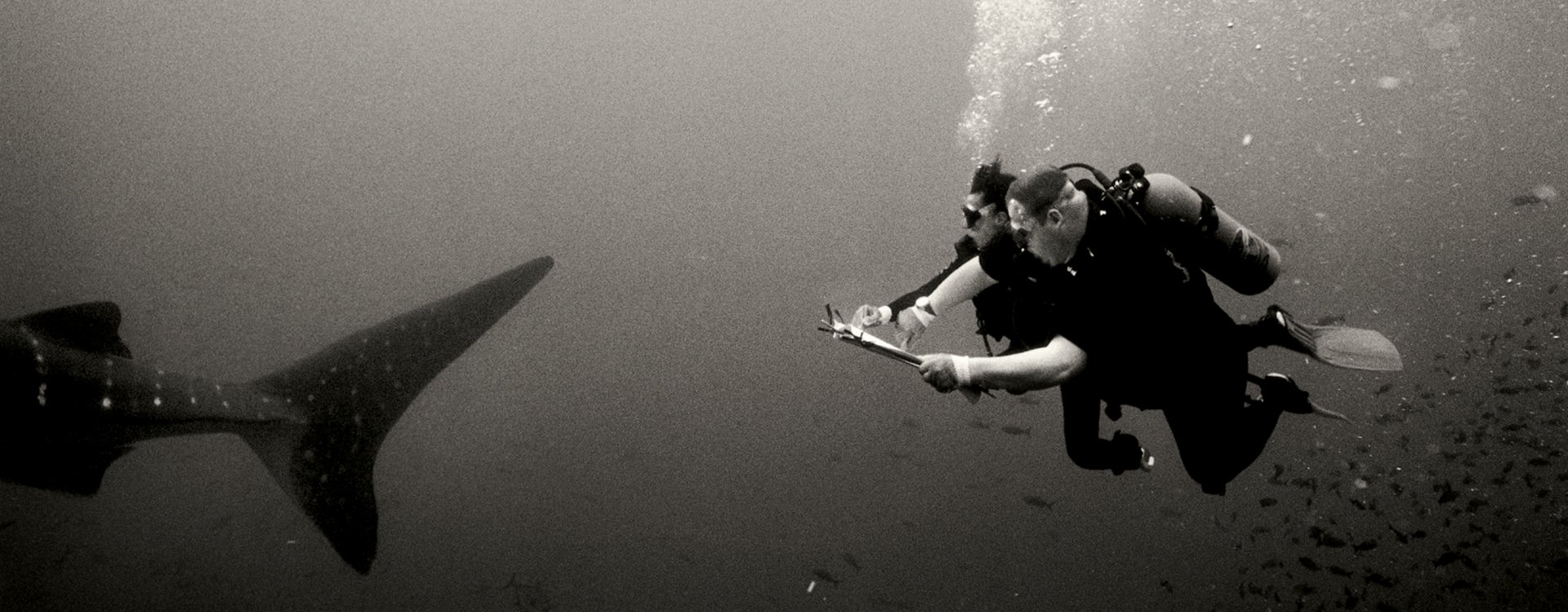
We are British collaborative artists. We track, paint and photograph endangered species in the wild. For the past 30 years we have been in a conversation with the natural world.
‘I have noticed in my life that all men have a liking for some special animal, tree, plant, or spot on earth … let a man decide upon his favourite animal and make a study of it, learning it’s innocent ways. Let him learn to understand it’s sounds and motions. The animals want to communicate with man.’
Brave Buffalo, Sioux Nation
About
Our art-making process is concerned with our collaborative, mutual response to nature at its most primitive and wild. Through live and direct interaction we aim to document the passing of animals, habitats and tribes that are here now but might not be for much longer. We make all our work in response to the natural world from first-hand experience, from ‘ground-truth’. In this way the bush has become our studio.
We first met as fine-art degree students at Central St Martins School of Art in London in 1987. Our initial experiments with drawing on the same piece of paper at the same time came about in the print-room making monotype prints and on small scale sketch book pages. In a short space of time we realised we liked working together this way even if our college did not. We had become a team.
Our collaboration began in earnest during our Sophomore scholarship to Syracuse University in New York. Here we first discovered Native American art and learned of the Mohawk/Iroquois belief in ‘animals as brothers’. This ethos would have a profound impact on us both and remains our key subject to this day.
Inspired by this conservation wisdom and our first journeys together in the North American wilderness, we were struck by a simple realisation; if we wanted to understand the nature of wild animals and our relationship to them we needed to get out of our urban comfort zone and make our work where they lived.
In preparation of our mission ; Tracking, remote region medicine, scuba-diving, and wilderness survival became as essential to our practice as the craft of drawing from life. During this period Olly served as a Combat Medic in 144 PFA RAMC (V), passed BATLS as part of the HAC patrol medic cadre, qualified as a free-fall parachutist and worked in Kenya as an expedition medic and professional diving instructor.
In 1995 we took a step into the unknown, gave up our London studio and embarked on ten year period of extended art-making expeditions. Our passion for painting together combined with our quest for adventure would take us into remote Arctic, desert, ocean and jungle habitats on all 7 continents to track, dive with and paint the most endangered creatures on the planet. Our commitment to our wild subjects was cemented in the field. In 2004 Abrams in New York published a 267 page artist monograph about this period entitled; Olly and Suzi: Arctic, Desert, Ocean, Jungle with an introduction by Clive James.
Today we combine both a studio and a wilderness practice. Our work still represents our original mutual passion for documenting the plight of the natural world and understanding our place in it. In this regard we have become passionate conservationists. Our work is held in private and public collections worldwide including; the Damien Hirst “murder me” collection, the UBS collection, the Astra Zeneca collection, the New Art Gallery, Walsall, the National Gallery of the Cayman Islands and the Natural History Museum in London where we had a year long show in 2001-2002. We have been honoured to have been guest speakers at the Goldman Sachs/ Astra Zeneca launch, The Hay Festival, The Royal Institution, The Royal Geographical Society, The Natural History Museum and on behalf of the Commonwealth Ocean initiative at The Science Museum in London and in 2016 became ambassadors for Leica UK. In 2009 BBC “Storyville” commissioned and screened a feature length documentary film about our work in the wild.
“Their interest in nature is poetic and innocent, rather than melodramatic and pumped up. What I like about their produce is the way it seeks to preserve a sense of nature’s delicacy and preciousness.”
Waldemar Januszczak, Sunday Times.
